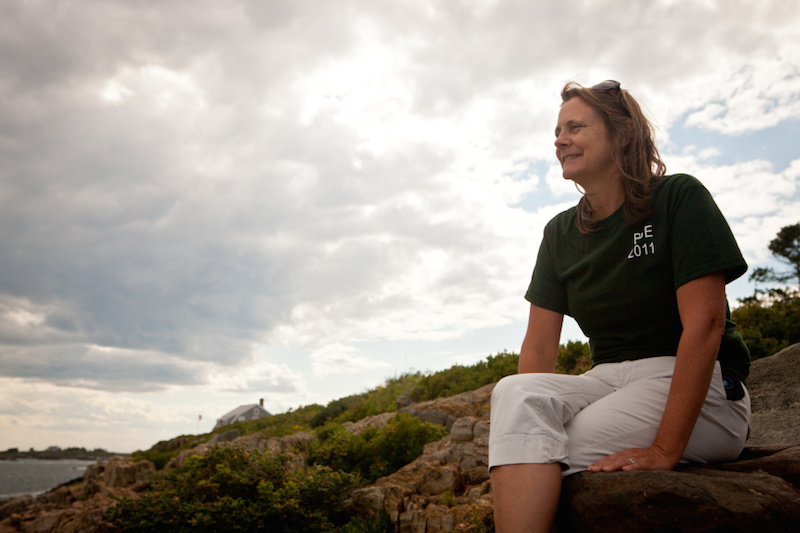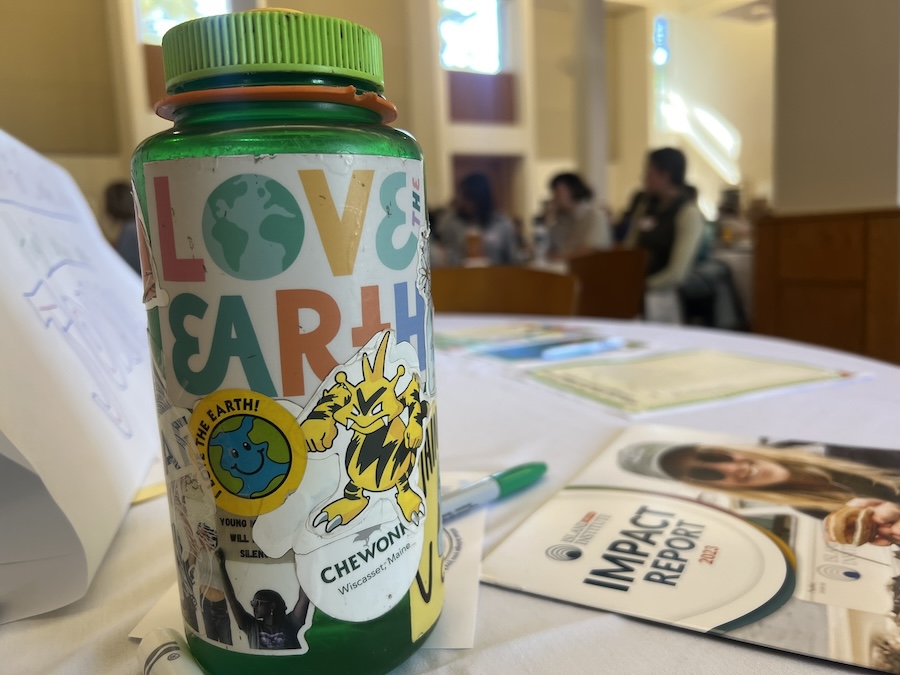Bowdoin Scientist Embarks on Major Ocean-Climate Study
By Rebecca GoldfineFor thirty-seven days this August and September, Bowdoin oceanographer Collin Roesler will live on a 238-foot research vessel in a remote patch of the Gulf of Alaska, 200 miles from shore. With a community of other scientists, she will study the ocean’s army of plankton and bacteria. Though they are tiny, even microscopic, these organisms play a critical role in climate change.

The expedition, and its 100 or so scientists and crew, is being funded by NASA and the National Science Foundation. The goal of the project, known as EXPORTS (Export Processes in the Ocean from Remote Sensing), is to gain a deeper understanding of the life sustaining ocean-climate relationship. Specially, researchers will be looking at the cycle that starts when blooms of phytoplankton that live within the sunlit surface layer of the ocean remove carbon dioxide from the atmosphere and store it within the ocean.
“We know humans are putting a lot of carbon dioxide into the atmosphere, and we can’t account for all of it in the atmosphere,” Roesler said recently, taking a break from packing for the upcoming trip. “We know it’s going into the ocean. And what we want to know is, where is it going? And when are we going to see it again? Because we will.”
Carbon enters the ocean as carbon dioxide, dissolving best in colder rather than warmer waters. Masses of water in the cold polar environments carry carbon-rich water to ocean depths as part of the deep ocean circulation, the “conveyer belt” that can sequester the dissolved carbon dioxide away from the atmosphere for millennia. Simultaneously, there is a biological component to the carbon story, in which the organic form of carbon in living or dead organisms sinks from the uppermost “lit zone” of the ocean into the “twilight zone,” where sunlight cannot penetrate. There it can be safely sequestered for decades to thousands of years.
While scientists know a good deal about how carbon moves through the ocean, what is murkier is just how much carbon is staying there and for how long, and whether climate-induced changes are affecting the processes. Findings from the expedition should help predict the amount of carbon that might cycle back into the atmosphere, and over what time scale.
The fate of carbon in the sea
Like terrestrial plants, microscopic phytoplankton grow via photosynthesis, releasing oxygen and absorbing carbon. Because the organisms depend on sunlight and carbon, phytoplankton live at the top of the sea, in a narrow band roughly 350 to 400 feet deep, the lit zone.
But once phytoplankton die or are eaten, some fraction of their carbon gets exported to depth. If dead plankton sink all the way to the ocean floor, the stored carbon can enter the sediment layer — and eventually the rock cycle — where it will remain safely sequestered for millions of years. Feces from zooplankton, the organisms that feed on phytoplankton, can also carry the carbon to the ocean floor. If, however, the plankton are consumed and the carbon works its way through grazers and carnivores, all the while staying in the upper ocean layer, the carbon might be respired back into the atmosphere. One of the major questions for the EXPORTS team is to identify which plankton communities result in deep-ocean carbon sequestration and which in surface-layer carbon recycling.


Future Satellite Missions
Within the larger expedition’s framework, Roesler’s specific objective is to develop a plankton-detection program for a new remote ocean-monitoring system. Along with assessing the organisms in the lit zone, she and her research partners will be measuring the optical properties of the water, such as the absorption and scattering, which impact the color and intensity of light. Roesler has spent most of her career investigating the distinct spectral signatures of phytoplankton that provide information on taxonomy or community composition.
After analyzing these signatures, Roesler will develop algorithms to essentially train a satellite 800 kilometers above the sea to scan for these plankton communities itself. “If I can do that from a satellite, then you can identify a specific consortium of plankton found at Station Papa [the Pacific Ocean weather station that is the site of the EXPORTS program]. And then look for the same features in the other ocean basins, essentially allowing the satellite to extend your field observations.”
Roesler can then compare this new data on global plankton communities to historical records to see whether plankton zones have expanded or contracted. Changes in temperature, wind, and nutrient availability — all climate-driven impacts on the ocean — can make the ocean more productive in some regions and less productive in others.
“By being able to put these measurements into the context of a changing ecology, we’ll have a better idea of what the ocean has been doing for us with regards to carbon-dioxide sequestration,” she said. “Because that’s a big black box.”
Ultimately the knowledge gained on the trip should help reveal how much the ocean has been protecting, and might continue to protect, the planet as it warms up. “The ocean has been buffering us for years,” Roesler said. “It has been taking up so much excess carbon dioxide for us, and yet we still keep pumping more into the atmosphere. We just have to stop wanting so much stuff.”



